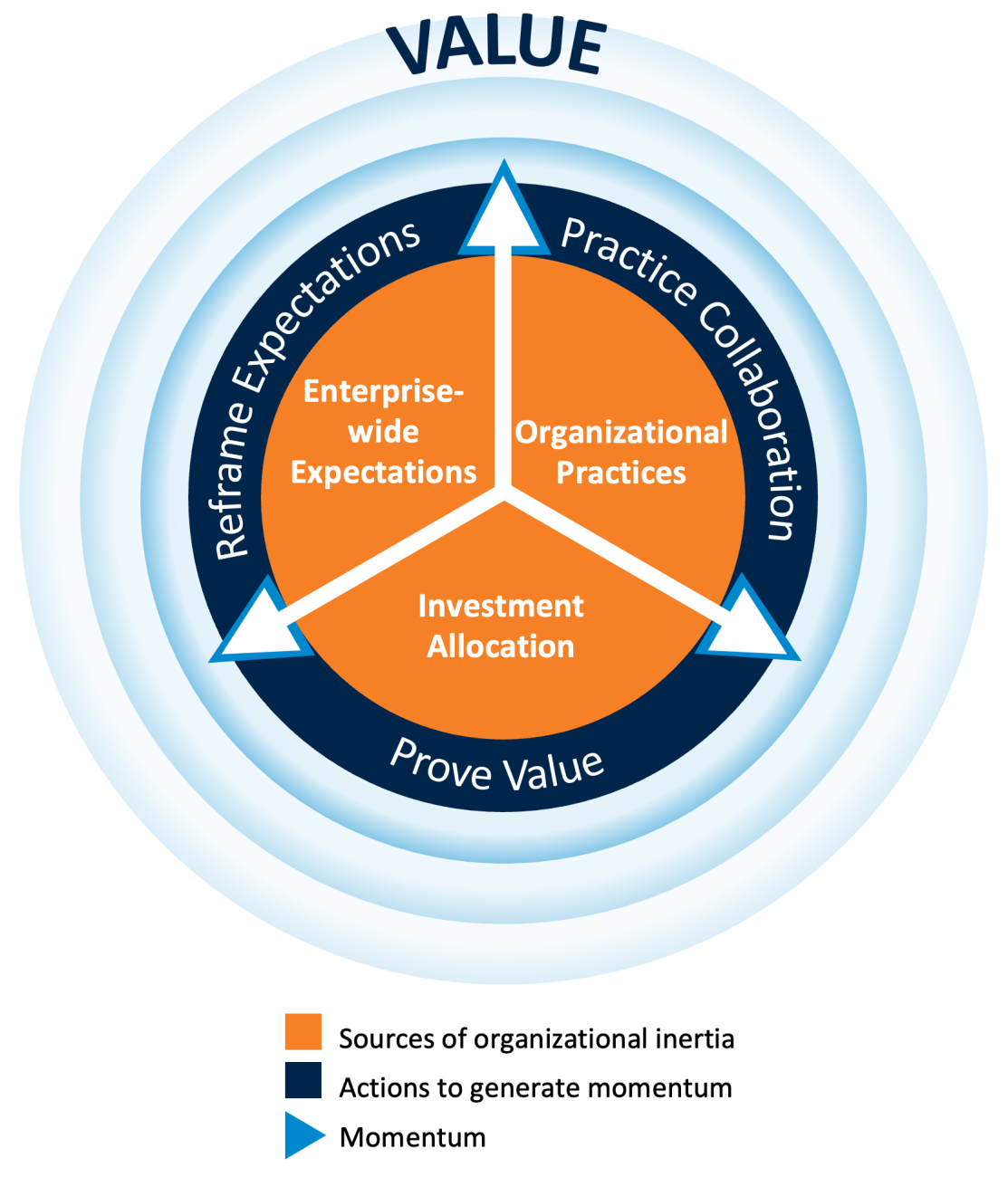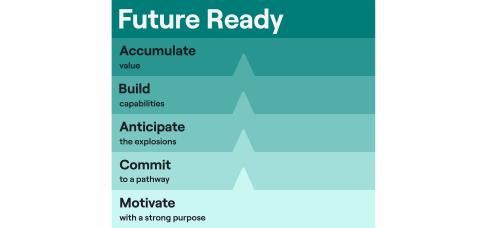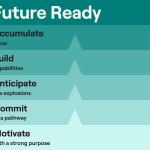Recent MIT CISR research suggests that digital business transformations may be beginning to stall. In 2017, companies in our research reported their transformations were 33 percent complete. Two years later, completion was at 50 percent. But in 2022, companies’ transformations had progressed only to 55 percent complete.[foot]Based on responses to the MIT CISR 2017 Pathways to Digital Business Transformation Survey (n=413), the MIT CISR 2019 Top Management Teams and Transformation Survey (n=1,311), and the MIT CISR 2022 Future Ready Survey (n=721). We asked companies to assess how far along they were in their digital business transformation (their percentage complete) based on what they had proposed to the board. See Stephanie L. Woerner, Peter Weill, and Ina M. Sebastian, Future Ready: The Four Pathways to Capturing Digital Value (Boston: Harvard Business Review Press, 2022).[/foot]
A key challenge for digital leaders struggling to generate momentum—consistent, ongoing progress—in a transformation is motivating other business leaders at their company to commit to new goals and practices. To develop this commitment, digital leaders must overcome organizational inertia, which we define as when organizations resist change by holding on to existing approaches that have proven successful.
Organizational inertia is not inherently negative. It develops as a company creates value using established practices—for example, those it implemented to promote efficient operations. But when companies focus only on iterating existing successful practices rather than on exploring new ways to realize value using digital technologies, they risk losing value to disrupters that offer customers better or faster solutions to their needs.[foot] Academics have explored organizational inertia challenges in research publications such as Clayton M. Christensen, The Innovator's Dilemma: When New Technologies Cause Great Firms to Fail (Boston: Harvard Business School Press, 1997) and James G. March, “Exploration and Exploitation in Organizational Learning,“ Organization Science 2, no.1 (February 1991): 71–87.[/foot]
In this research briefing we aim to help leaders understand organizational inertia in digital business transformations. We propose three actions to generate momentum in transformations, and illustrate the actions using a case study from WABCO and ZF.










